Among popular tank plants there are two species with prefix Java. This is Java moss and Java fern. Our article is about the latter. Java Fern, also known by its scientific name Microsorum pteropus, is a popular aquatic plant species among aquarium enthusiasts. It belongs to the family Polypodiaceae and is native to Southeast Asia
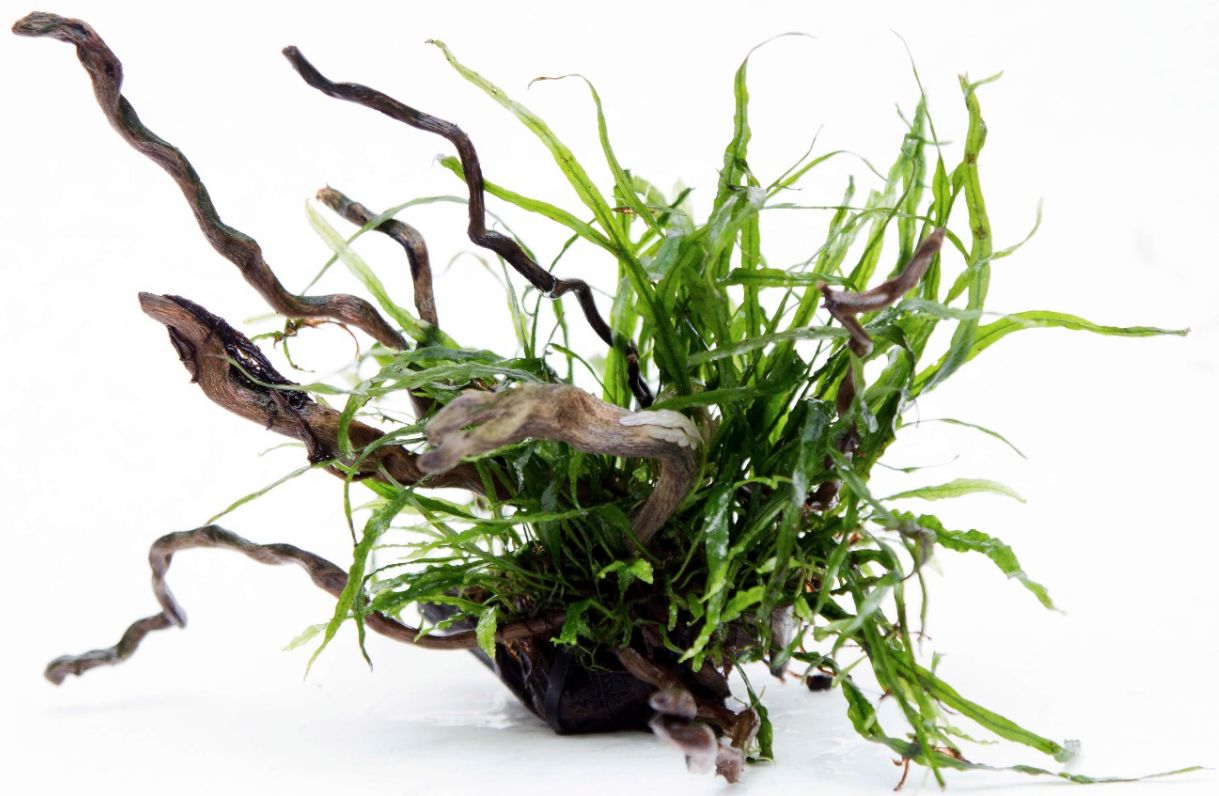
Contents
Habitat in the wild
Java fern (Microsorum pteropus) is a tank plant of Polypodiaceae family. In the wild grows in tropical areas of South-East Asia including Malaysia, Thailand, Indonesia, and the Philippines. It is commonly found growing along riverbanks, streams, and in wet, forested areas.
Java Fern is an epiphytic plant, meaning it can grow attached to other surfaces without taking nutrients from them. It obtains nutrients from the water column and organic debris, rather than through its roots.
In its natural habitat, Java Fern typically grows on rocks, driftwood, or other solid surfaces. It can attach its rhizome to these surfaces and anchor itself. The water in its native habitat is usually soft to moderately hard, with a slightly acidic to neutral pH range. In its natural habitat, Java Fern is often found in areas with gentle to moderate water flow. It can tolerate these currents and even benefit from them as they help distribute nutrients and oxygen to the plant.
| Characteristic | Description |
|---|---|
| Scientific Name | Microsorum pteropus |
| Common Name | Java Fern |
| Family | Polypodiaceae |
| Origin | Southeast Asia |
| Leaf Shape | Varies depending on variant: broad, lobed, ruffled, narrow, triangular |
| Leaf Size | Varies depending on variant: small to large |
| Growth Rate | Slow to moderate |
| Preferred Lighting | Low to moderate |
| Water Hardiness | Can tolerate a wide range, from soft to moderately hard water |
| pH Tolerance | Slightly acidic to neutral |
| Temperature Range | 20-30°C (68-86°F) |
| Propagation Methods | Adventitious plantlets, rhizome division |
| Placement in Aquarium | Foreground, midground, or attached to hardscape (driftwood, rocks) |
| Compatibility with Fish | Generally compatible with most fish species |
| Maintenance Requirements | Low maintenance, minimal pruning needed |
| Benefits | Provides shelter, natural aesthetic, and helps with water oxygenation |
| Potential Issues | Rhizome rot if buried in substrate, susceptible to algae growth |
Description
Actually, there are many varieties of Java fern. As a rule they differ from each other in their leaves size and shape, but they are very similar in terms of growing conditions. Therefore everything written here is applicable for other fern kinds.
This fern has many varieties; here are just some of them:
Different types of java fern
Microsorum pteropus – Java Fern
Bright green lanceolate leaves grow each after each on its long rootstock. In a tank the plant growth up to 25-30 cm high and forms thick vegetation. Java Fern has distinctive green, leathery leaves with a pinnate (feather-like) structure. The leaves are typically long and narrow, with undulated edges. The plant grows relatively slowly, and the rhizome, a thick horizontal stem, attaches itself to surfaces such as rocks or driftwood.
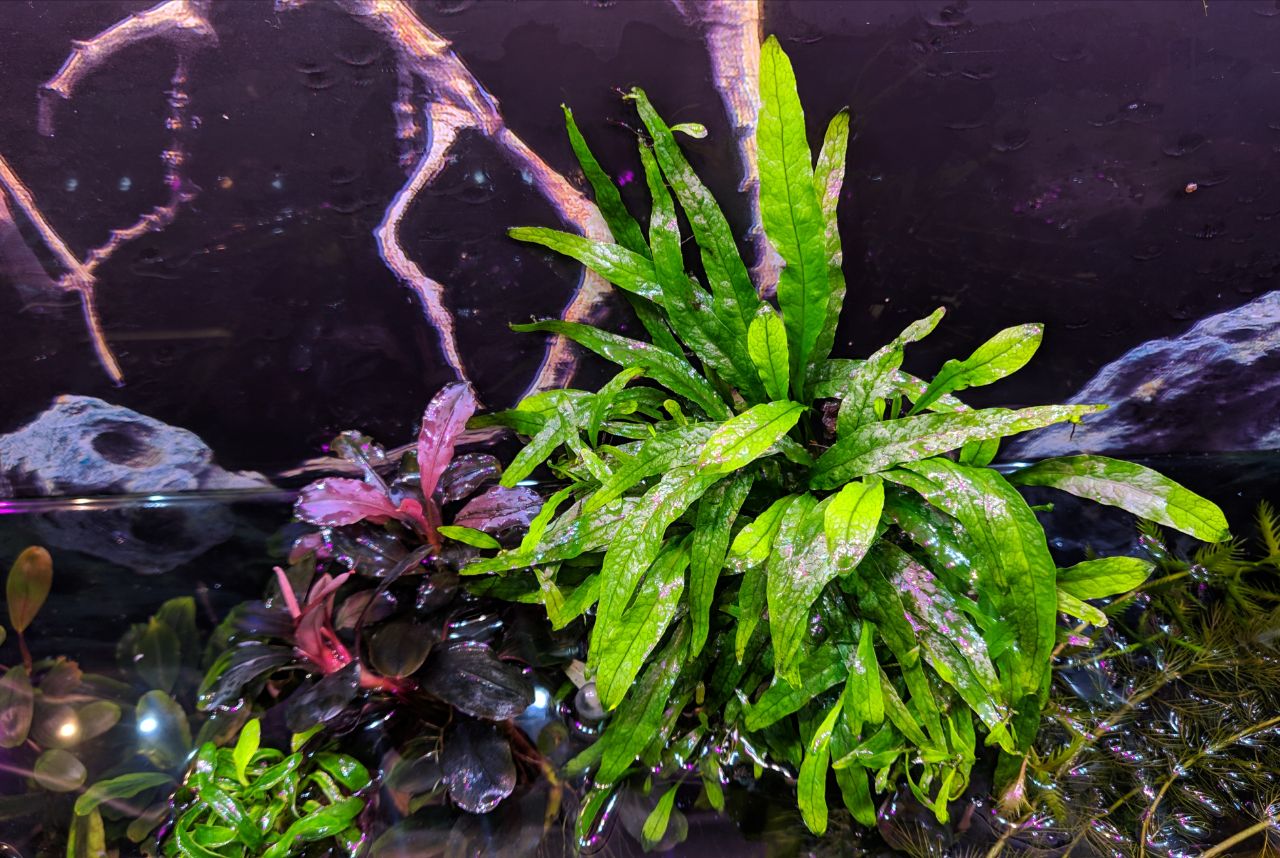
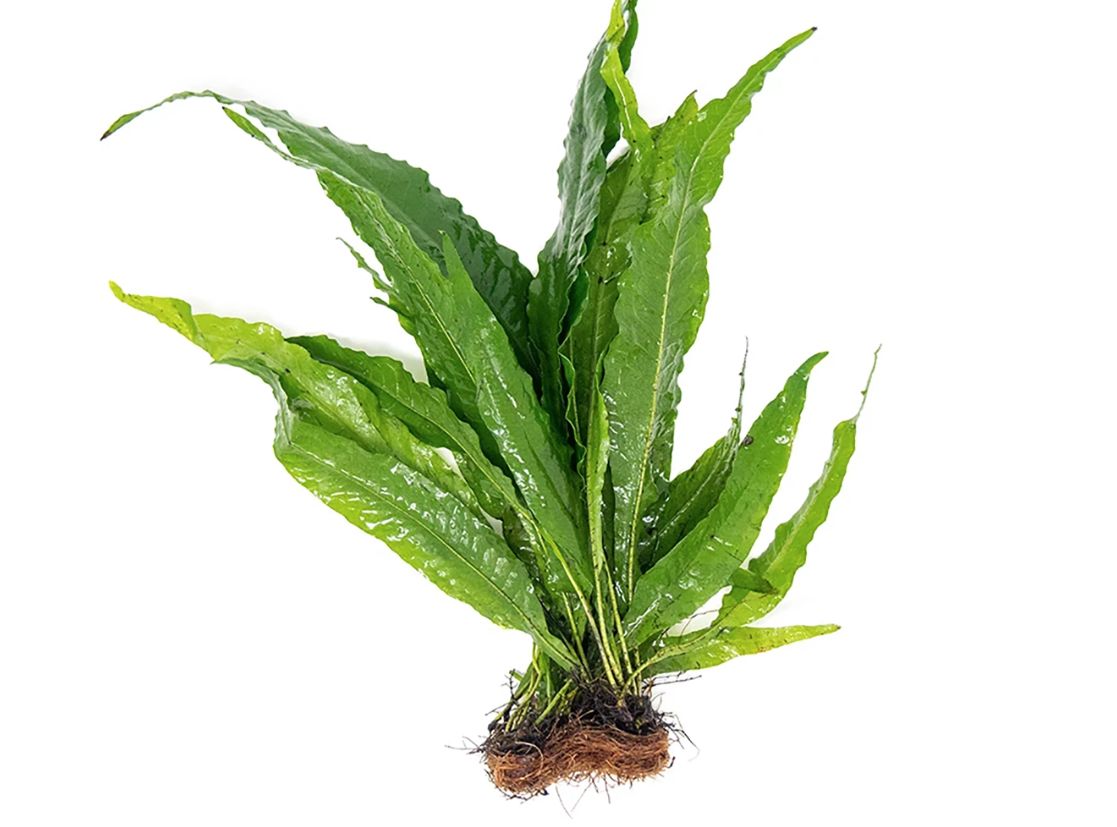
Microsorum pteropus ‘Narrow’
Microsorum pteropus ‘Narrow Leaf’ is a variant of Java Fern that is known for its distinctive narrow and elongated leaf shape. The leaves of Microsorum pteropus ‘Narrow Leaf’ are significantly narrower compared to the broader and lobed leaves of the standard Java Fern. They have a long and slender appearance, creating a graceful and delicate look.
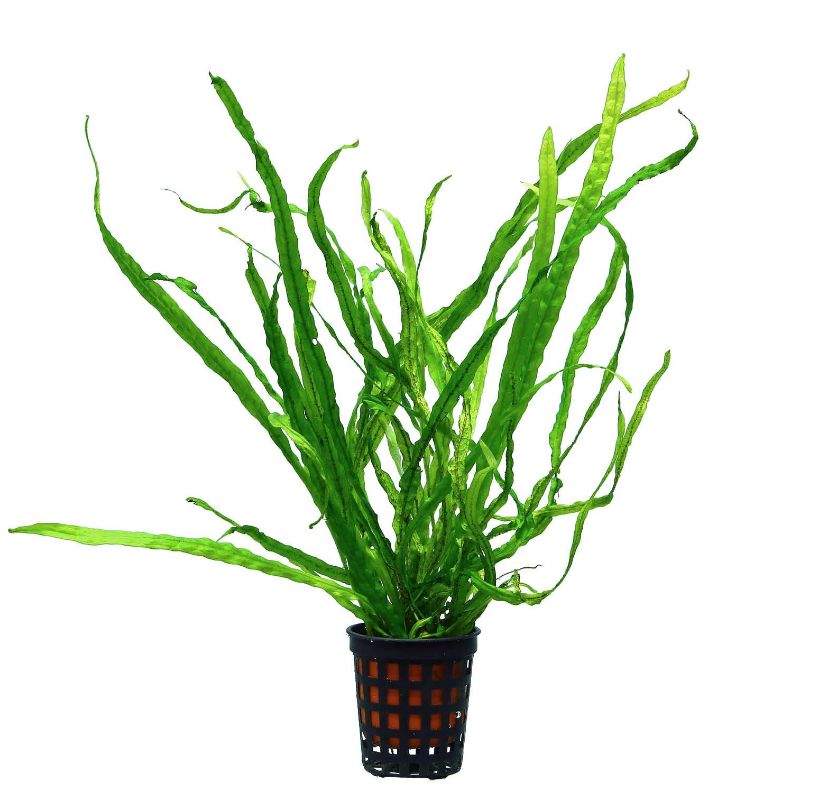
Microsorum pteropus ‘Trident’
The leaves of Microsorum pteropus ‘Trident’ are characterized by their triangular shape with branching tips, resembling the prongs of a trident. The leaves have multiple lobes, giving them a distinct and ornamental appearance. ‘Trident’ Java Fern typically has medium to large-sized leaves. The individual lobes of the leaves can vary in size, creating an intricate and textured look.
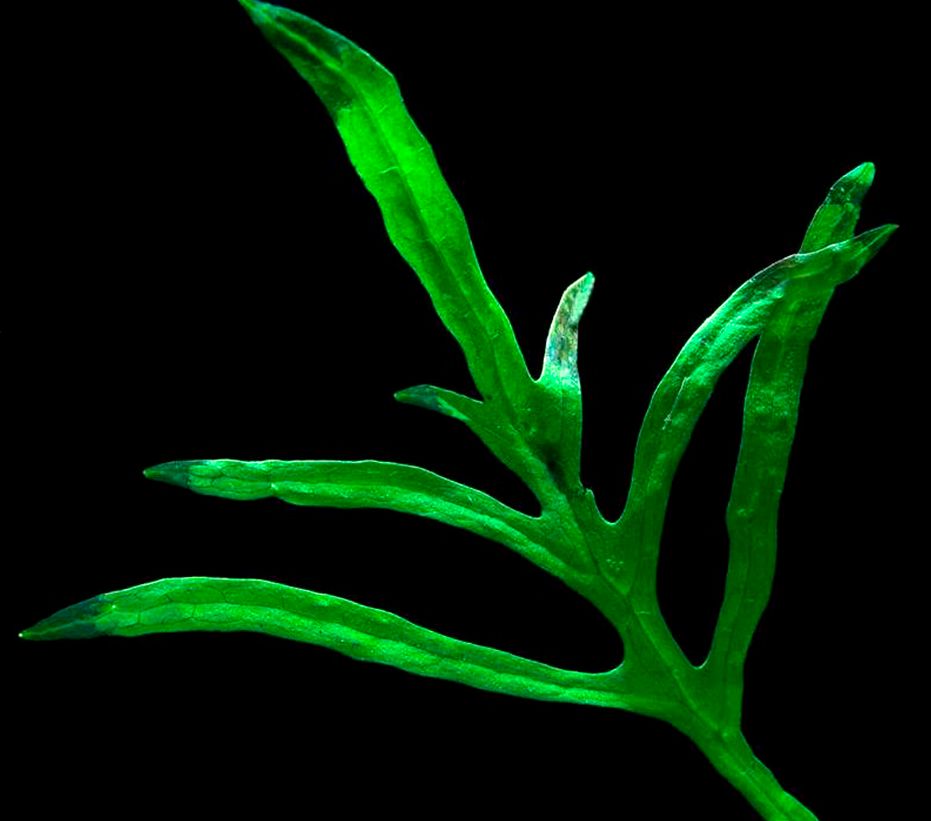
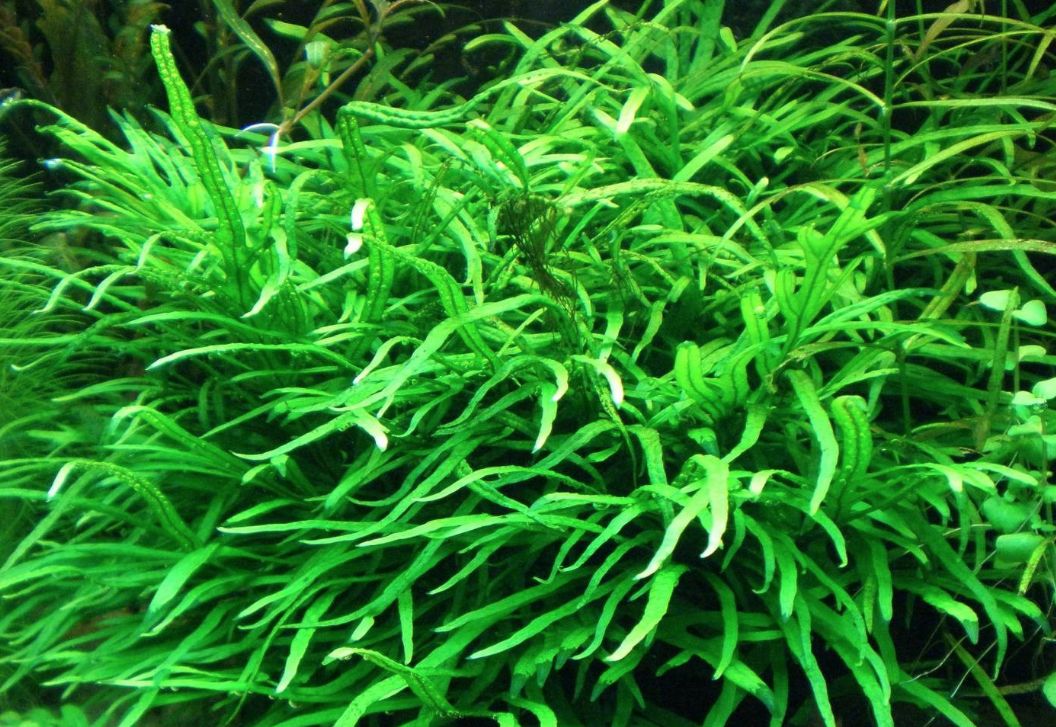
Microsorum pteropus ‘Windeløv’
Microsorum pteropus ‘Windeløv’ is a patented variety of Microsorum pteropus, named after Tropica’s founder Holger Windeløv. The leaves of Microsorum pteropus ‘Windeløv’ are ruffled, twisted, and deeply lobed, giving them an elegant and intricate look. The leaf edges may have wavy or crinkled patterns, adding to their unique texture. ‘Windeløv’ Java Fern typically has medium to large-sized leaves. The lobes of the leaves can vary in size, creating a visually appealing and dynamic display.
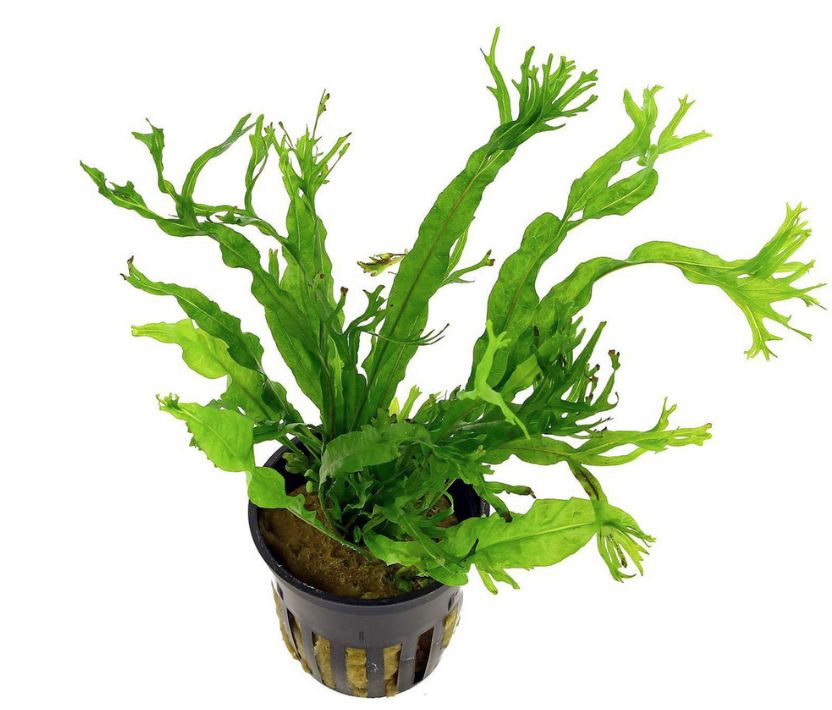
Microsorum pteropus ‘Petite’
Microsorum pteropus ‘Petite,’ also known as Java Fern ‘Petite’ is a smaller and more compact variant of the popular Java Fern. The leaves of Microsorum pteropus ‘Petite’ retain the characteristic broad and lobed shape of Java Fern but on a smaller scale. They have a delicate and petite appearance compared to the larger leaves of the standard Java Fern.
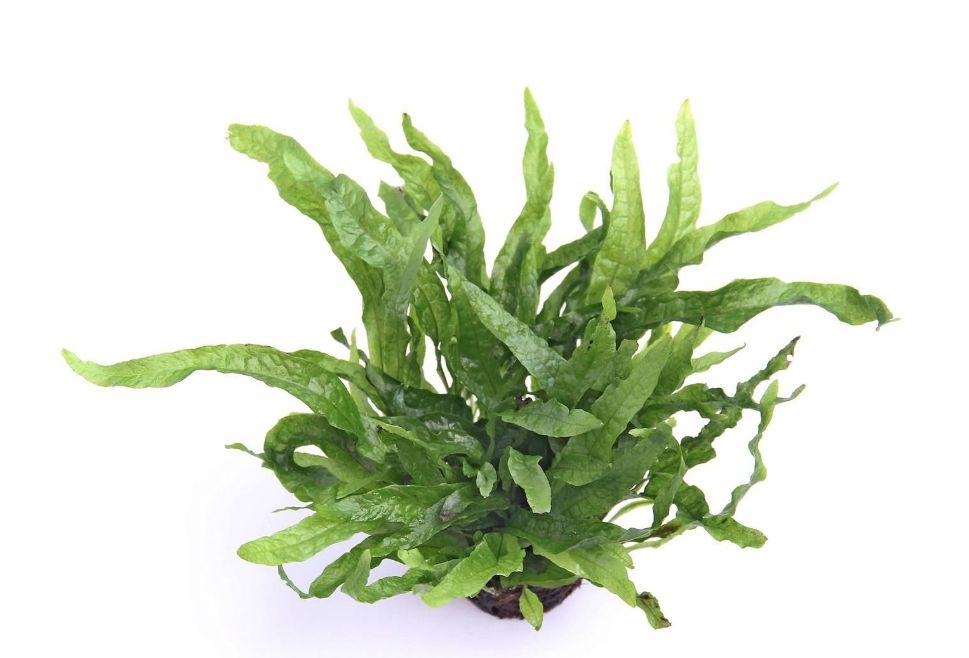
Difficulties in keeping
Species are very easy to keep and unlike most of other tank plants, they don’t require any substrate and they will successfully grow without CO2 supply. You can’t dig these plants into the substrate, but you can tie them to stones and snags. It is enough to tie pieces of the fern to a small stone to increase its weight and thus you’ll be able to move the plant around the tank.
Besides, all Java fern species possess perfect ornamental properties. They look especially good with snags, that’s why they are often used to create natural aquascapes. Another thing why aquascapers like this plant is its low growth rate – you don’t have to trim and cut it often.

Care and keeping in the tank
Growth rate
The growth rate of Java Fern (Microsorum pteropus) can be described as slow to moderate compared to many other aquatic plants. The growth rate of Java Fern can be influenced by various factors, including lighting, nutrient availability, water parameters, and CO2 levels.
The rhizome, the thick horizontal stem from which the leaves and roots emerge, is responsible for the plant’s growth and propagation. As the plant matures, the rhizome can extend in length and develop additional branching points, resulting in the growth of more leaves and plantlets.
Lighting
Java Fern is considered a low to moderate light-demanding plant. It can adapt and grow well in aquariums with low levels of lighting, making it suitable for setups without intense artificial lighting.
To keep Java fern successfully you will need moderate illumination. The plant can stand some shadowing for a long period of time, but at that its growth rate suffers at such conditions. Of course, the most favorable light for the plant is natural scattered one, but direct sunlight can lead to excessive algae growth and may cause damage to the plant’s leaves. Java Fern generally doesn’t require long periods of lighting. A photoperiod of 8 to 10 hours per day is typically sufficient for its growth and well-being. It’s important to establish a consistent lighting schedule to ensure the plant receives adequate light without excessive exposure.
Water parameters
Java fern grows well in a tropical tank with water temperature value higher than 24 °C. Even provided with optimal tank conditions it grows slowly. And if the water temperature is lower than the specified value, the plant almost stops growing.
Water hardness and violent reaction are of high importance. Java Fern can adapt to a variety of water hardness levels. It can grow well in both soft and moderately hard water. Aim for a water hardness of 2 to 15 dGH (35 to 250 ppm) for optimal growth. Soft water with hardness not more than 6° KH is the best for the plants. Violent reaction should be neutral or weakly acidic (pH 5,5 – 7). Such conditions usually form in old water.
Due to the above mentioned Java fern doesn’t require frequent water renews, since this can even slow down its growth rate. When dwelling in a community tank feels comfortable when 1/6-1/5 of tank volume is renewed approximately twice a month.
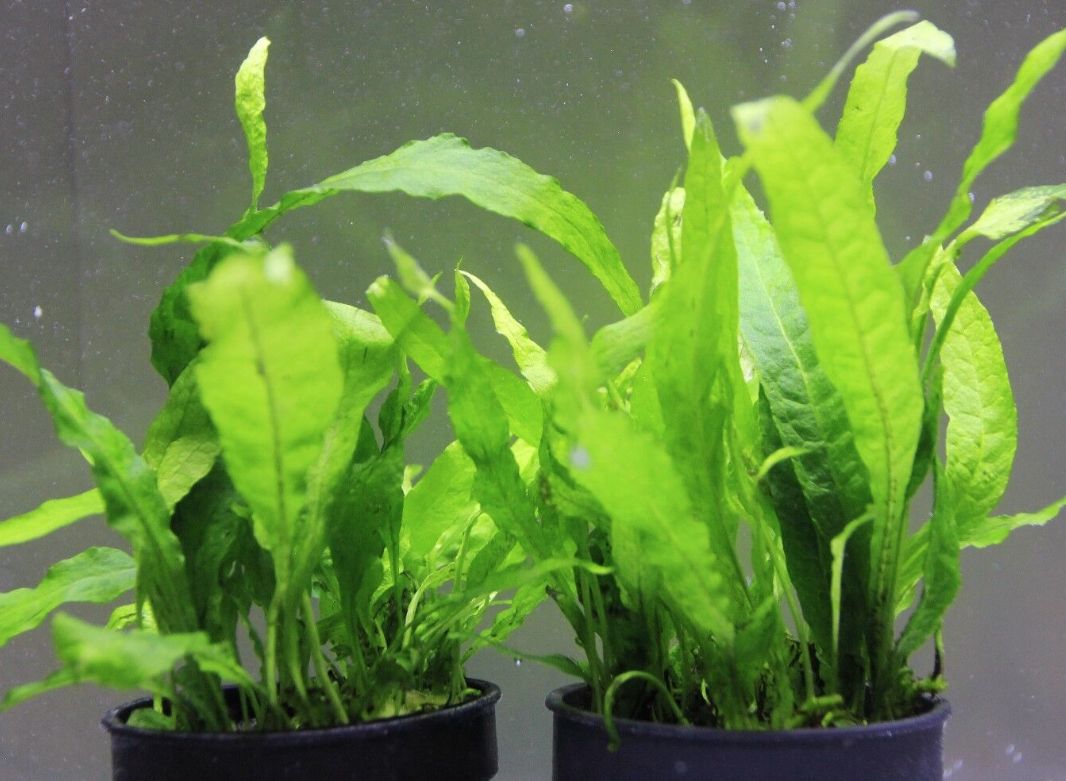
Substrate
As for the substrate, it’s not necessary for ferns. It obtains nutrients primarily through its rhizome, which should be kept above the substrate. Its rhizome is always above the substrate and its root system is comparatively poorly developed, therefore silt accumulated on the tank bottom is quite enough for it. That’s why if a tank has a bottom substrate, size of its particles is not significant for these plants.
t’s crucial to avoid burying the rhizome of Java Fern in the substrate. The rhizome is the thick horizontal stem from which the leaves and roots emerge. Burying the rhizome can lead to rotting and the eventual demise of the plant. Instead, you can attach the Java Fern to hardscape materials like driftwood or rocks using fishing line or plant it near these structures, allowing the rhizome to rest on top.
CO2
Java Fern is a slow-growing plant that can adapt well to lower levels of carbon dioxide. It can grow and survive without the addition of CO2, making it suitable for low-tech or low-light setups. In a well-maintained aquarium, Java Fern can utilize the naturally occurring carbon dioxide produced by fish respiration and organic waste breakdown. This can provide sufficient carbon dioxide for the plant’s growth.
Nutrients
The only thing you should keep in mind when growing Java ferns, is regular fertilization. These plants don’t have ‘true’ roots, they get most of fertilizers from the tank water. If you want your plants to reach the pick of their beauty, don’t forget to add liquid fertilizers after each weekly water renew.
As for the pellet fertilizers, that are put under plant roots, they are almost useless for Java fern – it won’t be able to use them, since it doesn’t have strong root system.
When cultivating fern you must take into account, that it doesn’t stand any unnecessary disturbance as well as presence of suspended organic particles in the tank water.
In a tank you should relocate plants and catch fishes as seldom as possible. Intense air blowing, strong water flow and presence of fishes digging the tank bottom essentially decrease growth rate.
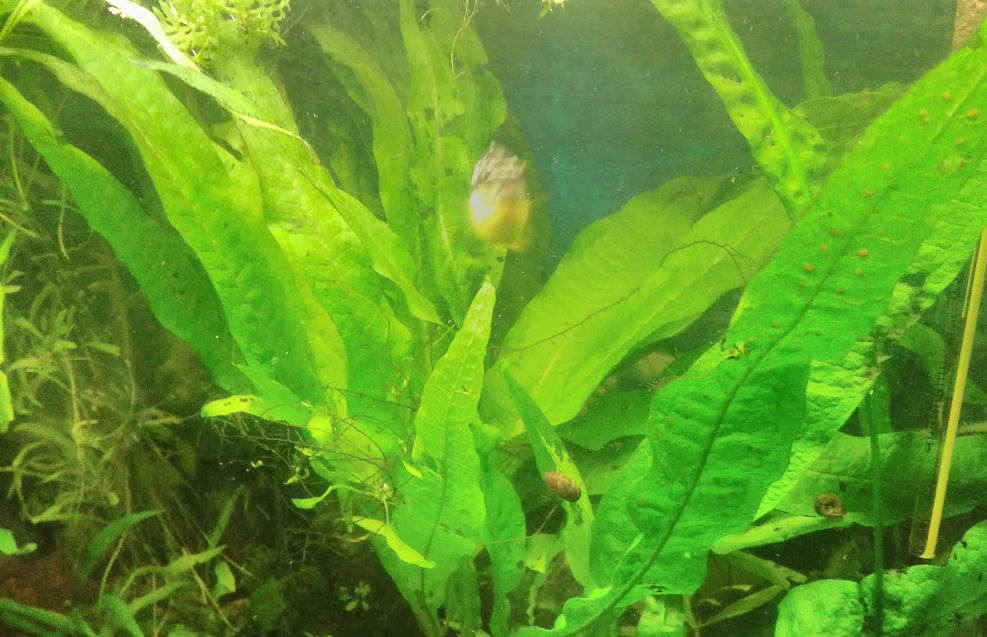
Propagation
In a tank Java fern uses only vegetative reproduction. Its rhizome is divided into several parts with two-three leaves on them. Later a new plant forms from each such part. The second way of vegetative reproduction is when growth buds appear on dying old leaves and soon a new plant develops from them.
After final death of the old leaf, the new plants tear away from it and emerge to the water surface. Gradually such a plant develops a rootstock and under the weight of it the latter gets gown to the tank bottom.
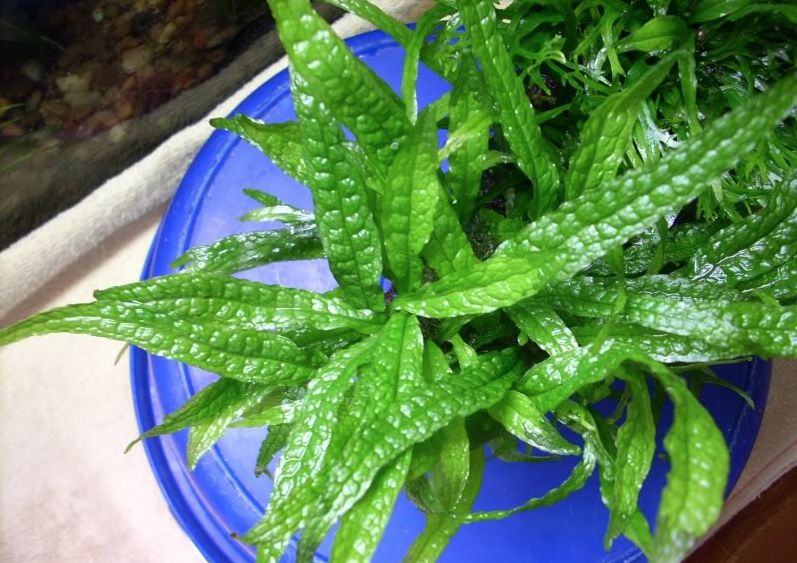
Compatibility with fishes
Java fern feature is that there are very few fish species, that would be tempted to eat it – even those, who are constantly trying to eat all types of tank plants. So, the plant can get on well with large cichlid species and many herbivorous fish species.
Coarse leaves make this fern uneatable for most of fishes and it is successfully used in cichlid species tanks together with another stiff-leaved species – Anubias nana.
Sources: